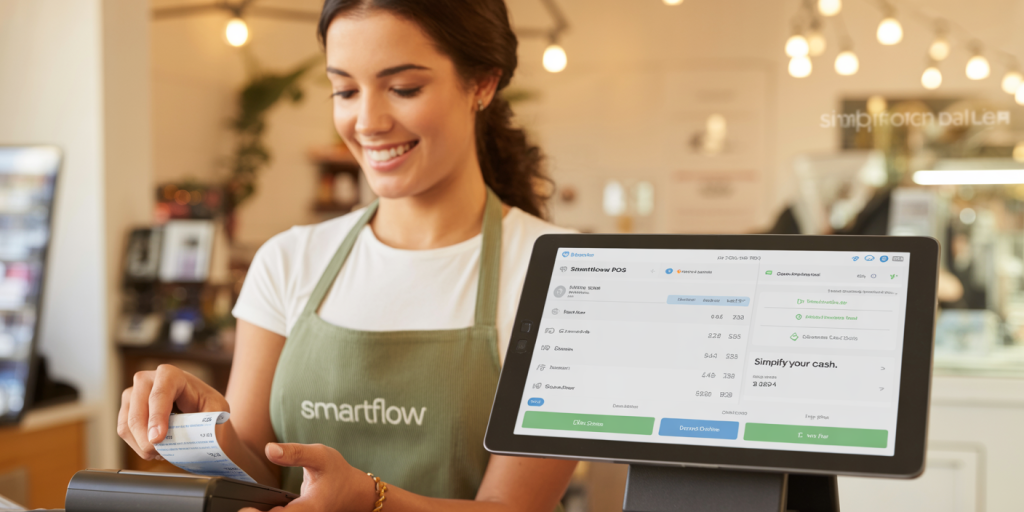Managing cash expenses can often feel chaotic, especially in a world dominated by digital payments that offer automated tracking. Despite this, cash remains a significant part of daily transactions for many individuals and businesses alike. According to a 2023 survey by the Federal Reserve, about 26% of U.S. consumers still use cash as their primary payment method for purchases under $10. Whether it’s paying for a coffee, tipping service staff, or making small in-person transactions, cash usage presents unique challenges in maintaining accurate records without becoming overwhelmed.


Tracking cash expenses is essential for financial discipline, budgeting, and avoiding overspending. Unlike electronic payments, cash transactions lack automatic logging, requiring conscious effort to document each expense. This article guides you through practical, stress-free methods to monitor your cash flow efficiently, supported by real-world examples, tools, and comparative insights that make the process manageable and sustainable.
—
Why Tracking Cash Expenses is Crucial
Although some might consider cash expenses small or insignificant, they add up quickly and can disrupt your budget if left unchecked. On average, Americans spend approximately $200-$300 monthly in cash, often without detailed recording (Source: NerdWallet, 2023). Without tracking, it’s easy to lose sight of these expenses, resulting in inaccurate financial analysis and missed savings opportunities.
Moreover, businesses relying heavily on cash must account for every transaction to prevent discrepancies and fraud. The Institute of Financial Management reports that small to medium enterprises lose up to 3% of annual revenue due to untracked cash expenses, underscoring the importance of systematic monitoring.
In personal finance, tracking cash expenditures helps you identify spending patterns, allocate budgets better, and prepare for taxes or audits. A clear expense trail also facilitates transparent communication with financial advisors or accountants.
—
Practical Methods to Track Cash Expenses
Using Daily Cash Journals
One of the simplest and most straightforward methods is maintaining a daily cash journal — a physical notebook or digital document dedicated to logging each cash transaction immediately after it occurs. For instance, Jane, a freelance artist, uses a small pocket notebook where she records every cash payment she receives or spends. This habit helps her stay aware of her daily cash flow without relying on recollection, which often falters.
Digital equivalents, like using smartphone apps such as Microsoft OneNote or Google Keep, allow for quicker entries and easy backups. Apps with voice-to-text functionality also reduce the effort involved. The key is consistency — small, regular recordings prevent the burden of retroactive expense tracking.
Utilizing Expense Tracking Apps
Besides manual entry, numerous apps specialize in managing cash expenses. Apps like Expensify, Mint, or YNAB (You Need A Budget) offer features to log cash outflows systematically. Real cases show that users of these apps report a 20% increase in budget adherence (Forbes, 2022).
For example, Mark, a small restaurant owner, uses Expensify to scan receipts and input cash payments made on-site for supplies or miscellaneous purchases. The app categorizes expenses instantly and produces reports that simplify bookkeeping.
While such apps require initial time investment to set up and learn, their automation capabilities significantly reduce human error, provide insightful expense analyses, and save time in the long run.
—
Comparative Table: Manual vs. App-Based Cash Expense Tracking
| Feature | Manual Tracking | App-Based Tracking |
|---|---|---|
| Accessibility | Requires carrying a notebook or device | Accessible on smartphones 24/7 |
| Ease of Use | Requires handwriting or typing | User-friendly interfaces with voice/text input |
| Accuracy | Dependent on user diligence | Automated data capture reduces errors |
| Reporting & Analytics | Manual compilation needed | Built-in analytics and export features |
| Backup & Security | Risk of loss or damage to notebooks | Cloud backups and encryption |
| Cost | Usually free | Some apps offer free and premium plans |
| Setup Time | Minimal, immediate start | Requires setup and learning curve |
This table highlights that while manual tracking is low-cost and immediate, app-based solutions provide enhanced convenience, accuracy, and analytical support.

—
Addressing Common Challenges in Tracking Cash Expenses
Overcoming Forgetfulness and Laziness
A frequent obstacle is simply forgetting to record cash expenses. This can occur due to busy schedules or lack of motivation. Psychologically, the inconvenience of tracking small transactions may outweigh perceived benefits.
To counter this, experts recommend establishing “financial rituals.” For example, allocating 5 minutes every evening to record cash expenses can cement the habit. Furthermore, integrating expense tracking within existing routines—like pairing it with bedtime preparation—helps reinforce consistency.
Managing Loose Receipts and Documentation
Receipts are fundamental for accurate cash expense tracking but often get lost or crumpled in pockets and wallets. Businesses and individuals alike face the dilemma of misplacing critical proof of purchase, especially in cash-heavy environments.
A best practice is digitizing receipts using smartphone cameras or apps like CamScanner. This transforms physical paper into organized digital archives accessible anytime. Additionally, organizing receipts by date or category in folders, whether physical or digital, simplifies retrieval and reconciliation later.
—
Leveraging Technology to Simplify Cash Expense Tracking
Technological advancements increasingly ease the burden of tracking cash. Modern smartphones equipped with high-quality cameras facilitate quick scanning of receipts or handwritten notes, seamlessly integrating with expense apps.
Voice recognition software, integrated into apps like Google Assistant or Apple’s Siri, also supports hands-free data entry. For example, Sarah, a retail store manager, uses voice commands to record cash transactions on the go, saving time and preserving accuracy during busy shifts.
Moreover, some innovative solutions offer smart cash wallets or point-of-sale (POS) devices that track cash transactions digitally. Kounta POS, for instance, records every cash sale instantly, eliminating manual logging. Businesses adopting such tools have reported a 30% reduction in cash discrepancy incidents (POS Insights, 2023).
—
Real-Life Case Studies Demonstrating Effective Cash Expense Tracking
Case Study 1: Freelance Consultant Uses Hybrid Method
Jessica, a freelance marketing consultant, faced difficulties tracking cash payments received from clients and incidental expenses. By combining a simple daily ledger book with manual app entry each evening, she maintained accuracy without feeling overwhelmed. Her net monthly cash expenses were reduced by 15% over six months, primarily due to enhanced awareness.
Case Study 2: Small Café Implements Digital POS and Expense Apps
A small café in Chicago integrated a digital POS system that recorded all cash sales in real-time. Employees were trained to capture expenses through Expensify immediately after purchase. This dual approach resulted in both better staff accountability and clearer financial reporting. Their cash discrepancy rate dropped below 1%, compared to 5% prior to the system overhaul (Small Biz Journal, 2023).
These examples underscore that combining simple tools with discipline leads to sustainable and effective cash expense tracking.
—
Future Perspectives on Cash Expense Management
As digital payment systems become more prevalent, cash usage might decline but will never become obsolete. Experts predict hybrid financial ecosystems where cash coexists with digital currencies and payment methods (Deloitte Insights, 2024). Consequently, solutions for cash tracking will evolve to integrate smoothly with digital financial management platforms.
Emerging technologies such as blockchain-based expense tracking and biometric verification for cash transactions hold potential to improve accuracy and security. Small businesses may soon adopt smart cash registers featuring AI-powered tracking that automatically reconciles cash flow with accounting software.
For individuals, voice-activated personal finance assistants could offer hands-free, real-time cash expense logging, integrating expenses instantly into budgets or tax reports. Behavioral finance research also suggests gamification elements might encourage consistent tracking through reward mechanisms.
Ultimately, effective cash expense tracking depends on combining technology, behavioral strategies, and personalized systems that reduce cognitive load while delivering actionable insights. Whether you are an individual budgeting your monthly spending or a business owner managing daily cash inflows and outflows, adopting these evolving methods can save time, reduce errors, and pave the way for financial clarity and peace of mind.
—
Tracking cash expenses need not be a daunting task. With thoughtful approaches tailored to your lifestyle or business scale, the process can become seamless, precise, and even empowering. Start today by selecting a method or tool that suits your needs, and watch as your cash flow management transforms from a source of stress into a strategic financial asset.

Deixe um comentário